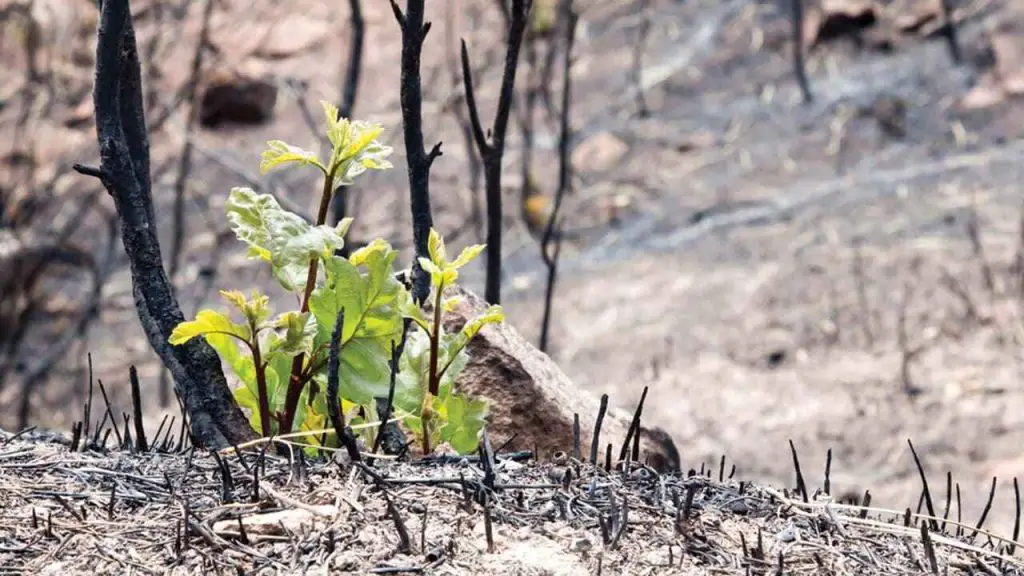Forest fires are a natural occurrence in many ecosystems, but they can quickly escalate and cause significant damage to the environment, wildlife, and local communities.
The aftermath of a forest fire can have lasting impacts that can take years, even decades, to recover from.
It is essential to understand the effects of a forest fire and the measures that can be taken to mitigate them in order to preserve the health and productivity of these ecosystems.
The study of the aftermath of a forest fire provides important insights into the resilience of ecosystems, the recovery processes, and the long-term impacts on the environment and local communities.
This article aims to explore the immediate and long-term impacts of forest fires, the steps that can be taken to recover from them, and the measures that can be implemented to prevent future fires from occurring.
From reforestation efforts to fire management and community involvement, this article will provide a comprehensive overview of the aftermath of a forest fire and the steps that can be taken to support the recovery of these ecosystems.
What Happens After A Forest Fire: Immediate Effects of a Forest Fire
The immediate effects of a forest fire can be devastating for the ecosystem and its inhabitants. The intense heat and flames can destroy vegetation, wildlife, and their habitats in a matter of minutes.
The effects of a forest fire can be far-reaching and long-lasting, and the recovery process can take years, even decades, to complete.
Vegetation Destruction: The heat and flames of a forest fire can destroy vegetation and trees in the affected area.
This loss of vegetation can disrupt the ecosystem and alter the balance of species, reducing biodiversity and wildlife habitats.
Wildlife Impacts: Forest fires can also have a significant impact on wildlife. Many animals are unable to escape the heat and flames and can be killed or injured.
Those that survive may struggle to find food and shelter in the aftermath of the fire, putting their long-term survival at risk.
Soil Erosion and Landslides: The intense heat of a forest fire can also cause soil erosion and landslides. The loss of vegetation can leave the soil exposed, which can increase the risk of erosion and landslides.
This can further disrupt the ecosystem and make it more vulnerable to future fires.
Air Quality: The smoke from a forest fire can also have negative impacts on air quality. The smoke can contain harmful chemicals and particulate matter that can be harmful to both humans and animals living in the area.
Inhaling smoke from a forest fire can cause respiratory problems and other health issues, making it essential to evacuate the area and seek medical attention if necessary.

Ecological Changes
In addition to the immediate impacts, forest fires can also lead to long-term ecological changes. The loss of vegetation and habitats can alter the balance of species in the ecosystem, reducing biodiversity and altering the food chain.
For example, the loss of vegetation and habitats can lead to a decline in the population of certain species, which can in turn have knock-on effects on other species in the ecosystem.
Furthermore, the changes in soil structure and nutrient levels can affect the regrowth of vegetation in the aftermath of the fire.
This can also alter the successional process of the ecosystem, as certain species may be better equipped to take advantage of the altered conditions.
This can lead to changes in the composition and structure of the ecosystem, which can take years or even decades to recover from.
Reforestation Efforts
Reforestation efforts play a crucial role in the recovery of an ecosystem after a forest fire. The planting of new trees and other vegetation helps to restore lost habitats, providing a source of food and shelter for wildlife.
Reforestation also helps to reduce soil erosion, increase the absorption of carbon dioxide from the atmosphere, and improve the overall health and productivity of the ecosystem.
Reforestation efforts can be carried out by government agencies, conservation organizations, and local communities.
The choice of tree species used for reforestation is also crucial, as the selection of native species can help to restore the natural balance of the ecosystem and support the recovery of wildlife populations.
Economic and Social Impacts
In addition to the ecological impacts, forest fires can also have significant economic and social impacts.
The destruction of homes, businesses, and infrastructure can result in financial losses for local communities and disrupt their livelihoods.
The loss of tourism revenue, as well as the increased costs associated with firefighting efforts, can also have a significant impact on the local economy.
Moreover, the social impacts of forest fires can be far-reaching, as the loss of homes and communities can result in displacement and emotional trauma for those affected.
This can have long-lasting effects on the health and well-being of individuals and communities, making it essential to provide support and resources to help them recover.
Prevention and Mitigation Measures
Preventing and mitigating the impacts of forest fires requires a comprehensive approach that includes measures such as:
- Fuel Management: reducing dry vegetation that can serve as fire fuel through controlled burning and tree density reduction
- Fireproofing Structures: using fire-resistant materials and designing structures to reduce fire damage
- Fire Breaks: clearing vegetation in certain areas to serve as fire barriers
- Public Education: educating the public on the dangers and causes of fires and how to prevent them
- Early Warning Systems: using fire detection systems and evacuation plans to quickly detect and respond to fires.
Effective prevention and mitigation measures can help to reduce the likelihood and severity of fires, as well as minimize their impacts on the ecosystem and local communities.
Conclusion
In conclusion, the aftermath of a forest fire can have significant impacts on the ecosystem and local communities.
Understanding the effects of forest fires and taking measures to prevent and recover from them is essential for preserving the health and productivity of these ecosystems.
From reforestation efforts to fire management and community involvement, there are many steps that can be taken to mitigate the effects of forest fires and support their recovery.
Additional Posts:


